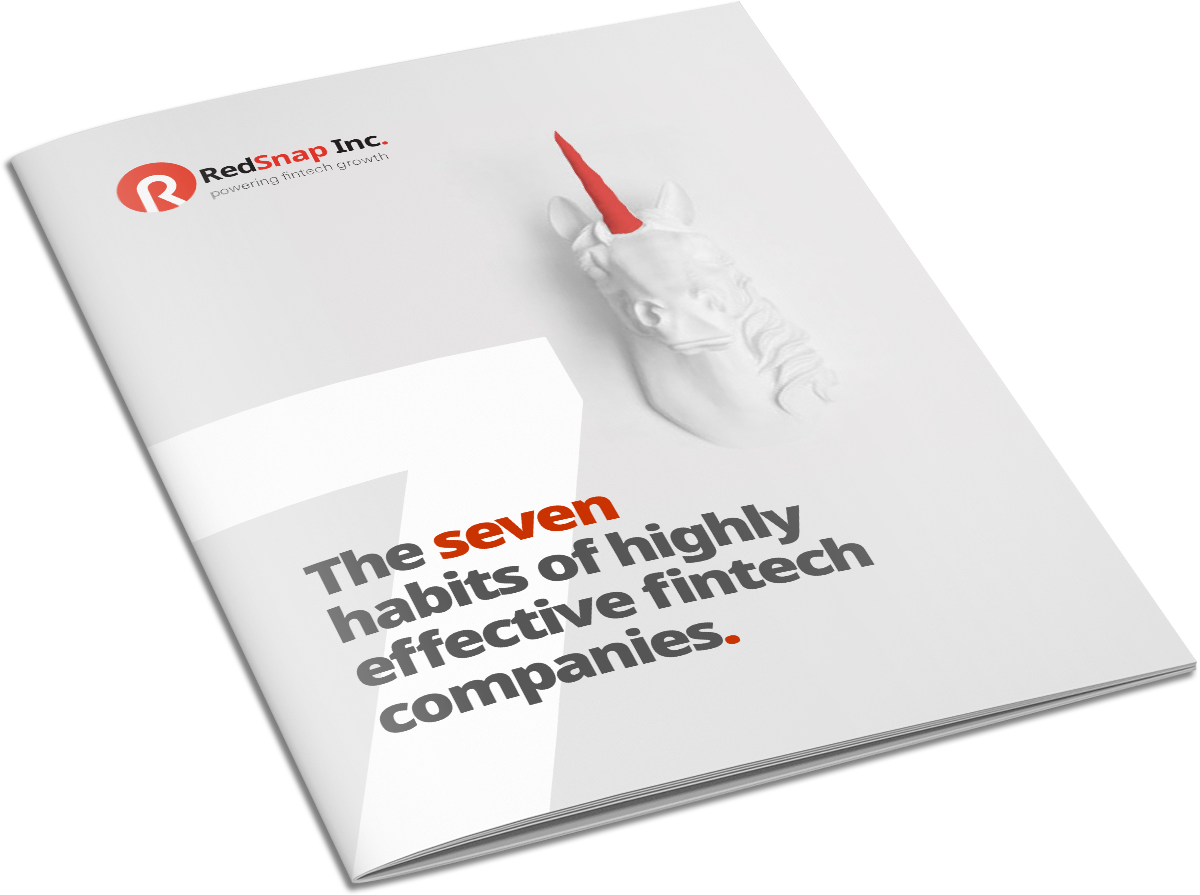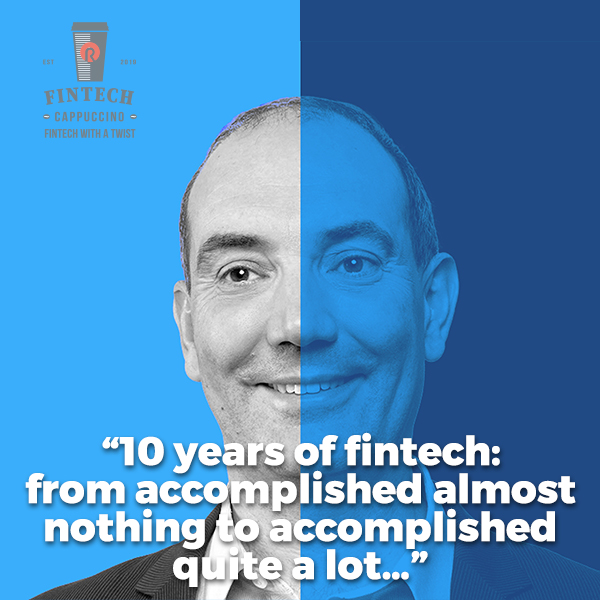The foundation of any successful go to market strategy ...
Marketing
Sales
Automation
For business leaders
For sales leaders
For marketing leaders
RedSnap Inc.
RedSnap Inc. is an agency for fintech branding, marketing & sales. We power fintech growth by aligning your marketing & sales. We develop appealing brands, impactful marketing campaigns and successful sales strategies that truly drive growth. Let’s simply say: we make sure your (potential) clients see you, like you and buy you.
For fintechs
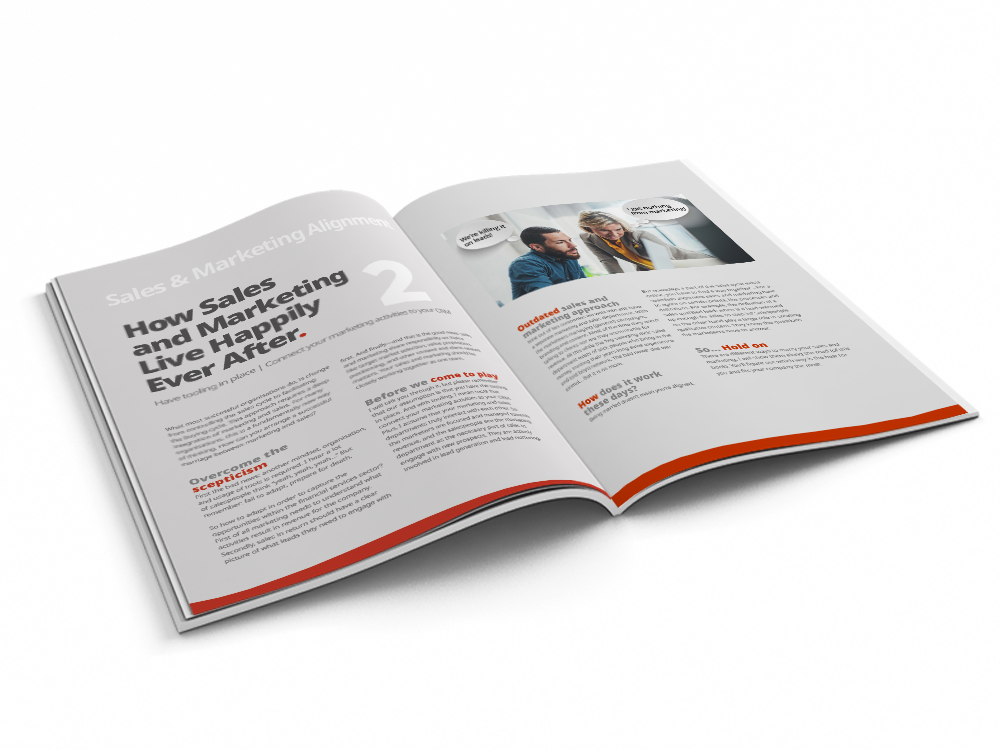
Download here.
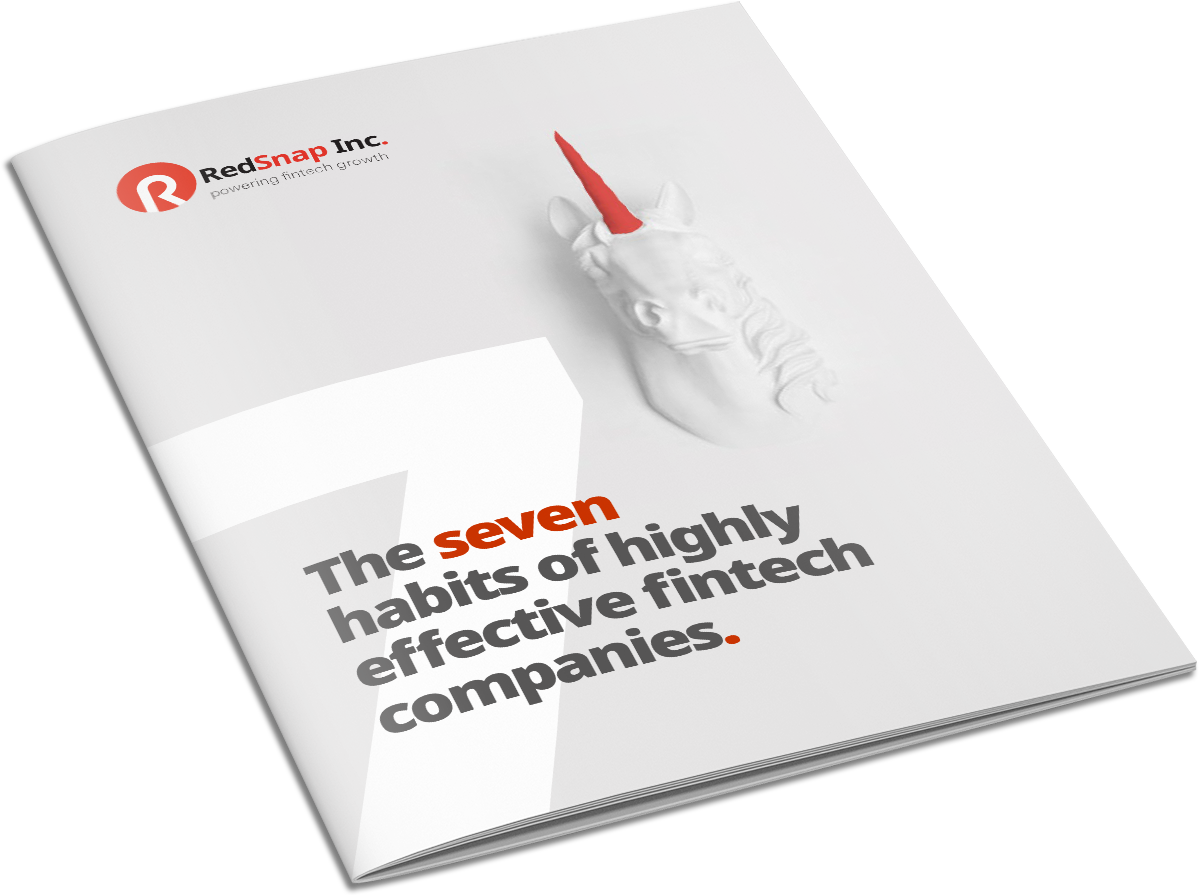
eBook 7 habits of highly effective fintech companies
Fintech
Mind the Gap!
Winning Sales is not everything:
it is the only thing.

So, on the one hand, we urge anyone and everyone to close the bridge between marketing and sales. On the other hand, we are telling you that it's all about focusing on sales? Well, yes and no. Let's get this paradox sorted out.
Winning sales is definitely about focusing on sales, but this is not meant to downplay the role of marketers. It is about defining what this focus on sales means for every department in the organisation. And if this focus on sales is right, it might even close the gap between marketing and sales.
But first things first, let's dive into the matter.
What's the game we're playing here?
It is not that companies forget about sales, but rather that they don't know how to play the sales game.
Sales is like playing tennis. Nobody cares about how many balls you hit, or services you make, how hard you hit the ball or how many miles you ran on the court. At Wimbledon, it is all about the performance: winning the game. And that's the same with winning sales.
Sales is a performance game and not an activity game. It doesn't matter how many calls you make or how many CRM entries and proposals you wrote…
Sales is about closing deals and ultimately about performance: the revenue. It is competitive, and yes, it is a zero-sum game. You either win or lose a deal. And if you can't stand the heat, don't get into the game.
Watch for the pitfalls
To perform at your top, you have to beware of the pitfalls. We encounter a few of those while working with our clients in the sales game.
Pitfall 1: managers
The biggest issue we encounter is 'managers'. Or rather the managers who think that sales is an activity game. They measure and manage their sales on silly activities and metrics. Sure, the number of calls, leads, and meetings could be indicators for management purposes, but the only relevant metric (to bother sales with) is revenue —nothing more, nothing less.
But if you insist on focusing on activities, there are two critical activities for sales: thinking and listening. So think about whom to work with, how to work it and how to win it. And never forget that listening is a massive part of winning sales.
Pitfall 2: lack of attention
The second pitfall we see is that some organisations seem to forget that every person in the company should contribute and align their activities and contribute to winning deals. And when I say everyone, I mean everyone from product development to delivery and marketing to senior management. Because no revenue means there is no money for admin, marketing, HR, etc.
Winning deals is the bloodline of your company, and everybody should ask themselves: do I contribute to winning deals, or am I blocking winning deals?
Pitfall 3: too much talking
The third big pitfall is that sales talk too much. Stop talking and start asking questions and listening. The favourite topic of your potential clients is themselves. Connect with your clients, start asking questions, and understand how you can help them.
Keep in mind: in the awareness phase (remember: 95% is not in the market if you reach out to them), nobody is interested in you, your company or your products. They are only interested in their own challenges, problems and, at a later stage, in how you can help them to solve their problems.
Easy improvement
So now we know that sales is a performance game; you can easily improve your sales game by focussing on the three main sales layers:
- Knowledge: about your market, your clients, the problems you solve, the competition etc
- Skills: sales-related skills: how do I build a pipeline, make compelling proposals, manage DMU's and navigate the deal through the clients' organisation.
- Interpersonal skills: how do I connect to a person, how do I ask the right questions properly and show genuine interest? How do I get somebody enthusiastic, and how do I create an urgency to act.
So what now?
My advice: train yourself, improve yourself, be curious about how you can improve, experiment, act, talk to peers or get a good coach or reach out to a mentor. Your companies and your commission depend on it. And it feels good to win.
But winning sales can only be done when the gap between marketing and sales is bridged. Yes, you’ve heard this many times before, but the big question still remains: HOW do you do that?
Well, that is what I’ve tried to tell you in this series of articles with the smashing title ‘Mind the Gap’. In twelve easy steps, any organisation can close the gap between marketing and sales….
In the first article, we took you from lead to deal and told you about facilitating the buyers’ journey. Then we helped you out with some good old marketing and sales alignment, followed by how to get your branding in place.
That didn’t sound too difficult now? So we took a deep dive into some more challenging topics like positioning and differentiation, the value proposition, target markets and the strict judges of the sales and marketing world: the buying committee.
By the time you got the hang of these subjects, it was time to dot the I’s and finally bridge the gap between marketing and sales by making a proper competition analysis and (almost there now) looking at your sales and engagement approach. Then we topped all this knowledge off with some nice pipeline optimization and sales enablement.
And that, dear readers, is what brought us here:
‘Winning Sales by bridging the gap between marketing and sales’.
Hope you’ve had as much fun reading this as we had writing it. Please feel free to contact me brian@redsnap.nl with any more questions.
The Series
Mind the Gap.
-
From lead to deal1: The sales game has changedFacilitate the buyer's journey, change your mindset
Lack of structure and a lot of creativity. Are these the characteristics that come to mind when asked to describe a great salesperson? Not really right? Yet, the best sales people I know in the industry are not very structured, not very organised nor disciplined.
-
Sales & Marketing alignment2: How Sales and Marketing live happily ever afterHave tooling in place | Connect your marketing activities to your CRM.
In our article 'From lead to deal: The sales game has changed' we observed that successful organizations changed from controlling the sales cycle to facilitating the buying cycle. This approach requires a deep integration of marketing and sales. For many organizations this is a fundamentally new way of thinking. How can you arrange a successful marriage between marketing and sales?
-
Branding & identity3: Who do you think you are?How to get your branding in place.
Welcome to our ‘mind the gap’ article about brand & identity. Let’s first make sure we are all on the same page about the terminology because the language used is often misunderstood. Brand: Your brand is a combination of a visual identity, tone of voice and behaviour - most visibly expressed through your logo, taglines and images used in communication campaigns.
-
Positioning4: Finding the right positionPositioning is all about differentiation.
Welcome to our ‘mind the gap’ article about positioning. Here we will discuss the importance of positioning and how it can help you stand out from your competitors. How many times have you walked into a bank to pitch for a piece of business only to be told ‘we already have the functionality you offer’ or ‘we solved that problem a long time ago’.
-
Value proposition5: Value proposition: the extra mileWhat problem do we solve and for whom?
In this ‘mind the gap’ article we will discuss the value proposition and how it will help your fintech sales efforts in the financial services sector. That is, if applied correctly... Going the extra mile...
-
Target markets6: Finding your target audienceHow do you enter the considerable and risk-averse market of banks?
Most Fintechs face the same challenges in finding their target audience. They have a fantastic product which solves a problem for a bank. But how do they enter the considerable and risk-averse market of banks? A challenge like this isn’t a day at the beach, or is it?
-
Buying committee7: Not a shopaholicGet to know the buying committee
Before banks buy your product (or service), you first need to convince the buying committee. The people on this committee make sure that the banks money is well spent. Here is how you deal with them in order to close a deal.
-
Competition analysis8: The illusion of the special snowflakeNever underestimate your competition
A lot of fintechs might feel the urge to skip the competition analysis. Simply because they feel they don’t have any competitors. Their product is a unique solution, so why bother with looking at what others do? Well, fintechs should worry because there is always some competition; ‘special snowflake-ness’ is an illusion.
-
Sales & Engagement approach9: Stop selling. Start giving!Just selling for the sake of it has and will never work.
It might come as a surprise to you, but focusing on selling is sometimes the worst thing a sales organisation can do. A much better approach is to focus on the problem you solve for your customers and how can you help them navigate the deal through their own organisation.
-
Pipeline Optimization10: Hot or not?Optimize your sales pipeline and find the most effective way from lead to deal.
Phrases like 'pipeline optimization' that we use in our Sales & Marketing businesses do not always sound exciting. Nevertheless, the topic of pipeline optimization is hot as can be! If you optimize your sales pipeline, you'll find the most effective way from lead to deal. Sounds like a plan, but how do you do it?
-
Sales Enablement11: Help your sales star winSales enablement is everything you need to do to enable your sales people to sell more
Let's have a look at 'Sales Enablement’. There seem to be many misunderstandings about this topic, but most companies don't even notice it.
The Ultimate Guide to Winning Sales in Fintech.
In this e-book, you'll learn about the one important question you need to focus on: how to win the market, as a team. Get your own copy and conquer the fintech world!
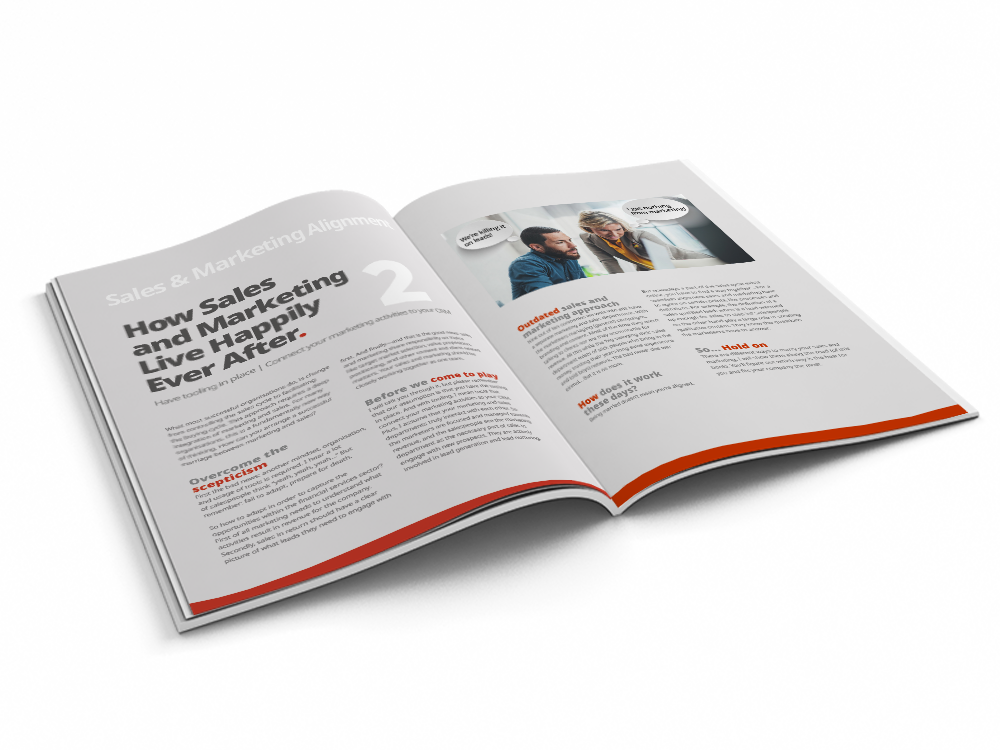
The 7 habits of highly effective fintechs
What are the 7 key habits that are continuously practised by successful fintechs? Follow the habits outlined in this e-book and you will be well on the way to growth.
